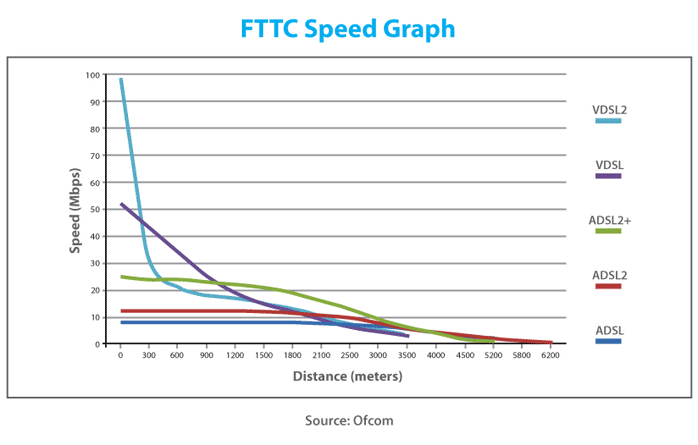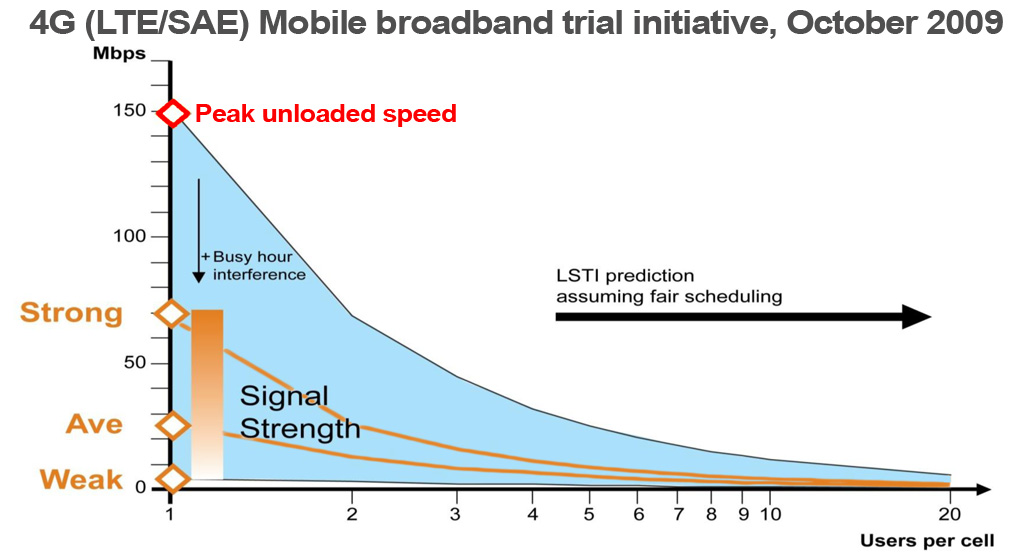Life_goes_on wrote on Aug 16
th, 2013 at 12:46pm:
I didn't say a limit has been reached. I said there's a trade off between throughput and distance.
Yes... VDSL can achieve speeds of 100Mps - but at what distances?
I believe it's up to about 1km for those kind of speeds.
Exactly how many pits and boxes do you want out there?
One on every block?
1KM????
http://nbnmyths.wordpress.com/why-not-fttn/


500m max and this with 2 good (not degraded!) copper pairs.
Do people honestly think this what the current network is like?
1. The NBN will cost taxpayers 50/70/90/100 billion dollars. We can’t afford it and it’s uncosted
False
The total capital cost of the NBN is budgeted at $37.4 billion dollars. Of that, the government investment is set at $30.4 billion. The remainder will come from revenue and NBN Co’s private debt. Unlike most Government expendiature though, the NBN is forecast to return all of the Government funds, plus interest, by 2034. It is forecast to begin repaying the Government funds in 2020.[1]
2. If it were viable, the private sector would build it
False
a. The private sector could not afford it. ~$37bn is a huge investment for any company, and well beyond any telco operating in Australia.
b. The private sector demand a ROI of at least 15%, because they need to earn a profit for their shareholders. The NBN has a projected 7% ROI[1]. While this is well below commercial rates, it’s quite acceptable for a Government, which is not seeking to earn a profit.
3. We will never need that much speed or data
False
This claim ignores the massive growth in average internet speeds that have occurred over the relatively short lifetime of the internet. As speeds continue to grow, new applications are quickly developed to take advantage of those new speeds. MP3 files and iPods, YouTube, Skype, HD video, Cloud storage. None of these applications were possible until sufficient bandwidth became available. The Cloud is probably the next Big Thing, but with current broadband speeds in Australia, we will be unable to take advantage of the opportunities it presents.
hhttp://nbnmyths.files.wordpress.com/2010/09/australian-internet-speeds.jpg
4. Noone else in the world is installing such a system
False
Fibre-To-The-Premises or Home (FTTP/H) is currently being rolled out in over fifty countries around the World, including New Zealand, Canada, the UK, Germany, Norway, France, Sweden, Kenya, Qatar, Japan, Singapore, Malaysia, Hong Kong and China.[5] Google have announced they are building a trial network to cover up to 500,000 homes in the USA,
5. Our internet speed is good enough
False
Australia has amongst the slowest available broadband speeds in the developed world. This is a huge impost to new technologies for business and education. Where FTTP is available, the cost is so high that only the largest businesses can afford it.
Australia’s average speed of just 1.7Mbps is less than 1/30th of the average speed available in Japan, and about 1/3 of the average speed in the USA.[10] Even the Slovak Republic and Turkey have faster average internet access than Australia! What a disgrace.
As FTTH networks are rolled out around the world, we

6. A Wireless (eg 4G, LTE, WiMax) or DSL (ADSL2+/VDSL/HDSL) network can provide the same speed for a fraction of the price
False
Much is claimed (usually by those with a vested interest) about the potential of wireless networks, with speeds such as 300Mbps being quoted. But this is highly deceptive, because those are peak speeds per cell site (ie per tower), not realistically achievable speeds for individuals. For example if the “300Mb” tower has just two users active, then speed is halved to 150Mbps. A trial of “4G/LTE” in 2009 showed that with just 20 people using any one tower, speed plummeted to just 7Mbps.[11] Distance, topography, buildings and weather also degrade available speeds. To put this in perspective, if only 2% of Australians wanted to be able to access even the slow 7Mbps speed at any one time, we would need to double the number of mobile phone towers across the country. For wireless to be an effective alternative to fibre, we would quite literally need a tower on every street corner.

7. People don’t want fixed internet, they only want mobile
False
The growth in this market is predominantly smartphones and handheld devices such as iPads. Mobile broadband is not making any inroads to high-volume home or business internet connections. Wireless’ high latency (lag) makes it unsuitable for gaming, video conferencing and VOIP just for a start. Average costs per MB are over 10 times higher than for fixed connections but only offer around ¼ of the speed, making them impractical and uneconomical for high-volume use

8. It will be too expensive to have an NBN connection
False
Skymesh have released NBN broadband pricing starting at $29.95 per month
Do i have to keep going?
I'm sick of having to debunk the same myths over and over!
Throw your playbook away!

 Forum
Forum

 Home
Home 

 Album
Album 

 Help
Help

 Search
Search

 Recent
Recent 

 Rules
Rules 

 Login
Login

 Register
Register





 Pages:
Pages: 

